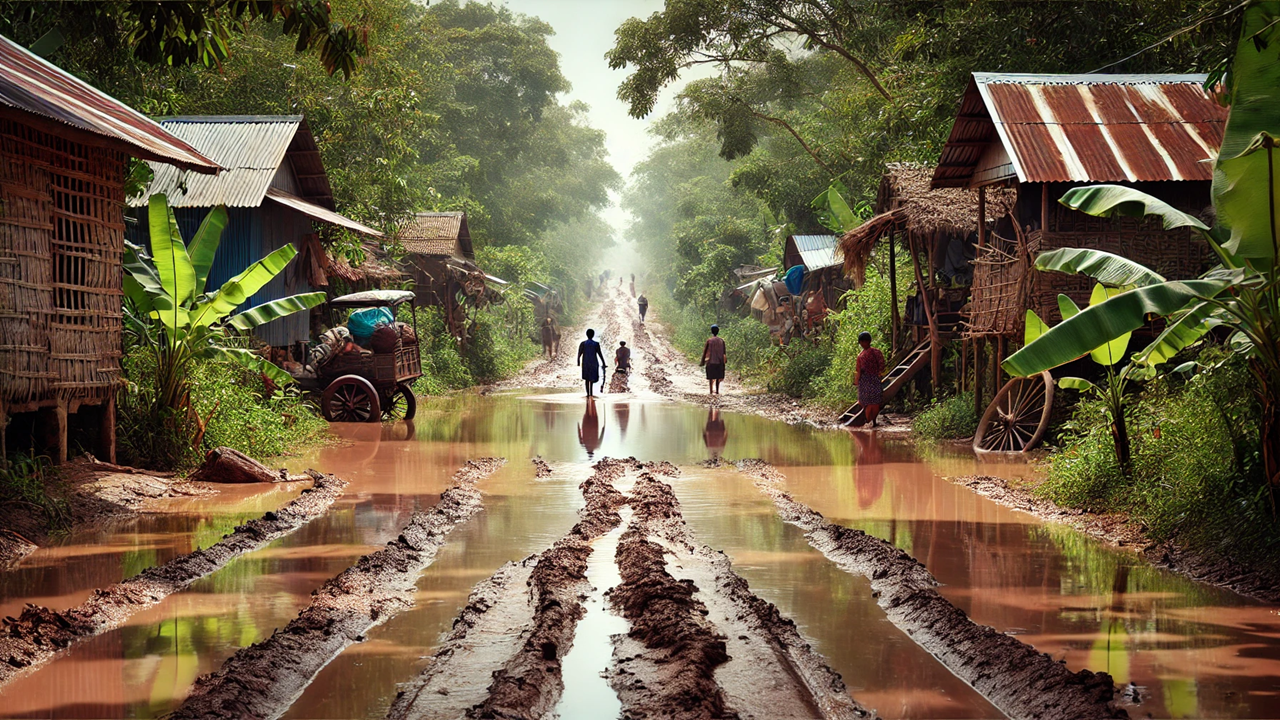Youth-Led Initiatives in SA and Colombia Enhance Flood Resilience through Innovation and Community Empowerment
In South Africa, flooding has become one of the deadliest natural disasters, with recent events underscoring the continent’s vulnerability.

In 2024, two innovative youth-led projects aimed at improving flood resilience were successfully implemented in South Africa and Colombia. These projects, “Water from a Rock” in South Africa and “Collaborative Mapping for Flooding Resilience” in Colombia, highlight the critical role of young people in helping vulnerable communities better prepare for and respond to flooding. Selected from over 30 proposals in a competition by the Associated Programme on Flood Management (APFM) and the Integrated Drought Management Programme (IDMP), these initiatives focus on empowering communities and advancing disaster preparedness.
Water from a Rock: Strengthening Flood Preparedness in South Africa
In South Africa, flooding has become one of the deadliest natural disasters, with recent events underscoring the continent’s vulnerability. For instance, in 2023, two dam collapses in Libya caused over 11,000 deaths, while floods in Southern and Central Africa claimed more than 1,600 lives. In response to these ongoing threats, the “Water from a Rock” project was developed by YouthMappers from the University of Pretoria, focusing on raising awareness, mapping vulnerable areas, and creating digital tools for flood warnings.
The initiative's primary objectives include educating communities about flood risks, mapping high-risk zones around the Umgeni River and Tongaat, and developing a geofencing-based app that alerts users when they enter flood-prone areas. The project involved conducting surveys among students to assess their knowledge of flood risks and distributing informational packages to raise awareness about flood alerts and emergency protocols. YouthMappers also carried out flood risk assessments to predict potential damage from various weather events such as tropical cyclones and tornadoes.
Despite challenges, such as limited computing resources that required scaling down study areas, the project made significant strides in improving flood preparedness. Going forward, the team aims to expand their efforts by identifying additional vulnerable areas across South Africa to enhance the app’s notification system, helping communities better prepare for future disasters.
Collaborative Mapping for Flooding Resilience in Colombia
In Medellín, Colombia, the “Collaborative Mapping for Flooding Resilience” project addresses frequent floods in the Iguaná Creek basin, an area that has suffered from repeated flood events since 1880. The project, led by YouthMappers chapters SAGEMA and GeoLab, aimed to empower the local community in Nueva Villa La Iguaná by providing self-management tools to reduce flood vulnerability.
Workshops held by Youth
Mappers introduced community members to mapping technologies such as OpenStreetMap and Kobo Toolbox, enabling them to collect crucial data on flood-prone areas and critical infrastructure. The data gathered helped identify key issues such as inadequate drainage systems and highlighted high-risk zones. By working with the Medellín Early Warning System (SIATA), the project also laid the groundwork for implementing a local early warning system.
The project was successful in fostering community engagement, empowering residents to take ownership of flood risk management, and strengthening ties between local authorities and the community. However, it also highlighted the importance of maintaining community interest and involvement over time, suggesting creative engagement strategies like tailored workshops for different age groups.
Challenges and the Path Forward
Both the “Water from a Rock” and “Collaborative Mapping for Flooding Resilience” projects demonstrate the power of youth-led initiatives to make a tangible impact on disaster preparedness. Youth involvement not only improved technical outcomes but also fostered a sense of ownership and empowerment in the communities. However, the sustainability of such projects remains a significant challenge due to limited access to technology, funding, and long-term support.
To ensure the continued success of youth-led initiatives, it is vital to provide young leaders with the necessary tools and resources, amplify their voices in decision-making processes, and establish long-term partnerships with institutions that can offer technical and financial backing. By doing so, these projects can serve as blueprints for future community-driven, youth-led efforts to build resilience against the growing threats posed by climate change and natural disasters.










